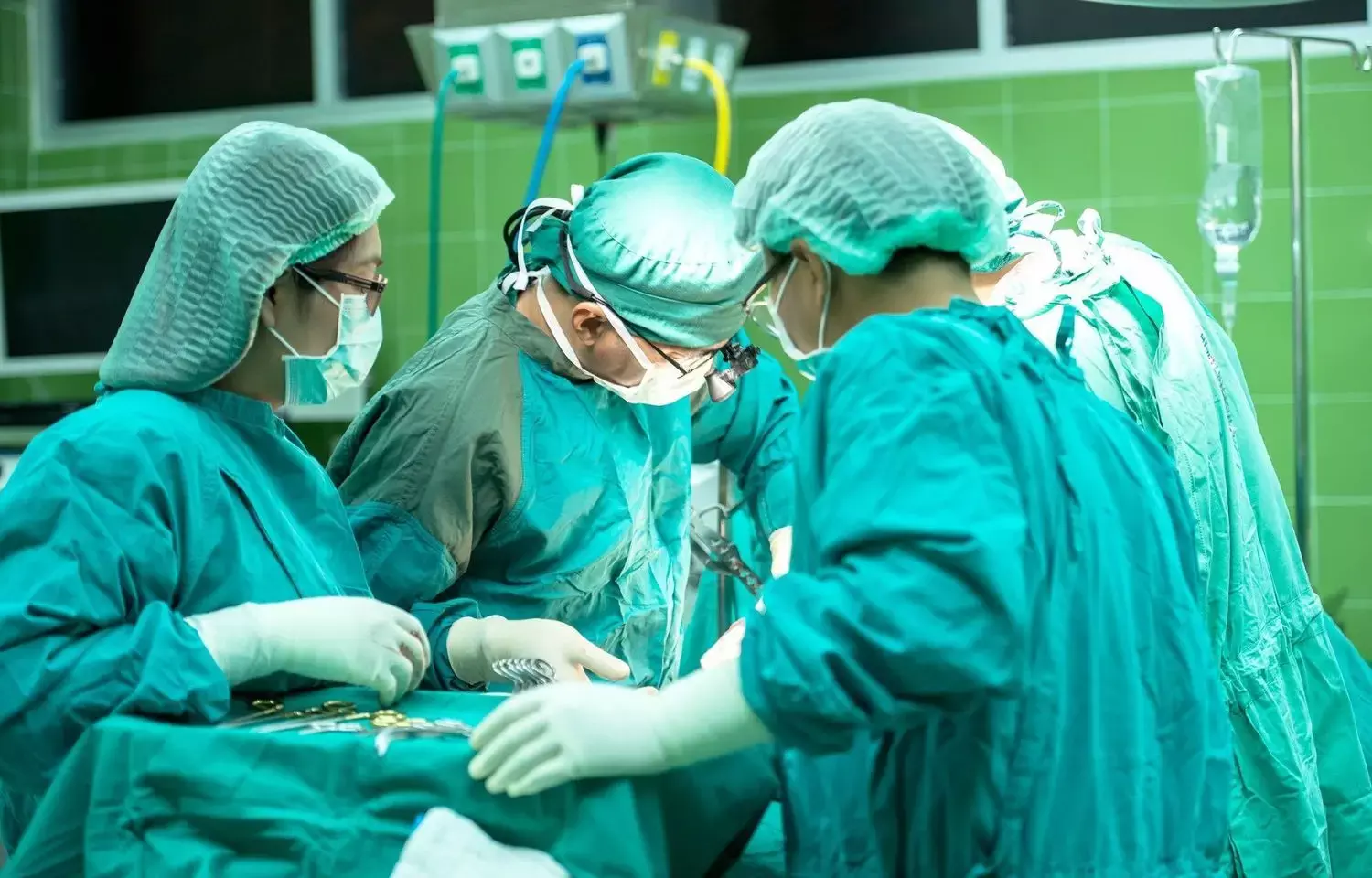- Home
- Medical news & Guidelines
- Anesthesiology
- Cardiology and CTVS
- Critical Care
- Dentistry
- Dermatology
- Diabetes and Endocrinology
- ENT
- Gastroenterology
- Medicine
- Nephrology
- Neurology
- Obstretics-Gynaecology
- Oncology
- Ophthalmology
- Orthopaedics
- Pediatrics-Neonatology
- Psychiatry
- Pulmonology
- Radiology
- Surgery
- Urology
- Laboratory Medicine
- Diet
- Nursing
- Paramedical
- Physiotherapy
- Health news
- Fact Check
- Bone Health Fact Check
- Brain Health Fact Check
- Cancer Related Fact Check
- Child Care Fact Check
- Dental and oral health fact check
- Diabetes and metabolic health fact check
- Diet and Nutrition Fact Check
- Eye and ENT Care Fact Check
- Fitness fact check
- Gut health fact check
- Heart health fact check
- Kidney health fact check
- Medical education fact check
- Men's health fact check
- Respiratory fact check
- Skin and hair care fact check
- Vaccine and Immunization fact check
- Women's health fact check
- AYUSH
- State News
- Andaman and Nicobar Islands
- Andhra Pradesh
- Arunachal Pradesh
- Assam
- Bihar
- Chandigarh
- Chattisgarh
- Dadra and Nagar Haveli
- Daman and Diu
- Delhi
- Goa
- Gujarat
- Haryana
- Himachal Pradesh
- Jammu & Kashmir
- Jharkhand
- Karnataka
- Kerala
- Ladakh
- Lakshadweep
- Madhya Pradesh
- Maharashtra
- Manipur
- Meghalaya
- Mizoram
- Nagaland
- Odisha
- Puducherry
- Punjab
- Rajasthan
- Sikkim
- Tamil Nadu
- Telangana
- Tripura
- Uttar Pradesh
- Uttrakhand
- West Bengal
- Medical Education
- Industry
Perioperative MI following major non-cardiac surgery frequent and tied to MACE

A new study conducted by Christian Puelacher and team showed that at 1 year, Major adverse cardiac events (MACEs) and all-cause mortality rates are unacceptably high for the majority of Perioperative myocardial infarction/injury (PMI) etiologies, underscoring the urgent need for more intensive therapies. The findings of this study were published in European Heart Journal.
A key factor in post-operative mortality and a common perioperative cardiac complication following major non-cardiac surgery is perioperative myocardial infarction/injury. Active monitoring for PMI has been used in previous research, which has shown that the condition is not a single, homogenous disease but rather a heterogeneous syndrome with a variety of underlying etiologies. Because of this, a comprehensive prospective multicenter research was done to analyze significant adverse cardiac events and all-cause mortality linked to various centrally adjudicated PMI etiologies within a year.
In a prospective multicenter study, the etiologies of PMIs discovered as part of an active surveillance and response program were centrally adjudicated by two independent doctors based on all data gathered during clinically indicated PMI work-up, including cardiac imaging, among consecutive high-risk patients undergoing major non-cardiac surgery. Acute heart failure (AHF), tachyarrhythmia, type 1 myocardial infarction (T1MI), severe sepsis, pulmonary embolism, and probable type 2 myocardial infarction are all cardiac diseases that can produce PMI. Extra-cardiac diseases include conditions like severe sepsis and pulmonary embolism (lT2MI).
The key findings of this study were:
During the 1-year follow-up, the incidence of serious adverse cardiac events, such as acute myocardial infarction, AHF (both only from day 3 to prevent inclusion bias), life-threatening arrhythmia, cardiovascular mortality, and all-cause death, was evaluated.
1016 (13.1%) of the 7754 patients (aged 45 to 98; 45% women) had PMI.
In 684/7754 patients (8.8%), there was at least one MACE, and 818/7754 patients passed away within a year (10.5%). In individuals with extra-cardiac PMI, T1MI, tachyarrhythmia, AHF, and lT2MI, MACE rates were 51%, 41%, 57%, 64%, and 25%, respectively, and 1-year mortality rates were 38%, 27%, 40%, 49%, and 17%, compared to 7% and 9% in patients without PMI.
In the study of many variables, these correlations persisted.
Reference:
Puelacher, C., Gualandro, D. M., Glarner, N., Lurati Buse, G., Lampart, A., Bolliger, D., Steiner, L. A., Grossenbacher, M., Burri-Winkler, K., Gerhard, H., Kappos, E. A., Clerc, O., Biner, L., Zivzivadze, Z., Kindler, C., Hammerer-Lercher, A., Filipovic, M., Clauss, M., … Gürke, L. (2023). Long-term outcomes of perioperative myocardial infarction/injury after non-cardiac surgery. In European Heart Journal. Oxford University Press (OUP). https://doi.org/10.1093/eurheartj/ehac798
Neuroscience Masters graduate
Jacinthlyn Sylvia, a Neuroscience Master's graduate from Chennai has worked extensively in deciphering the neurobiology of cognition and motor control in aging. She also has spread-out exposure to Neurosurgery from her Bachelor’s. She is currently involved in active Neuro-Oncology research. She is an upcoming neuroscientist with a fiery passion for writing. Her news cover at Medical Dialogues feature recent discoveries and updates from the healthcare and biomedical research fields. She can be reached at editorial@medicaldialogues.in
Dr Kamal Kant Kohli-MBBS, DTCD- a chest specialist with more than 30 years of practice and a flair for writing clinical articles, Dr Kamal Kant Kohli joined Medical Dialogues as a Chief Editor of Medical News. Besides writing articles, as an editor, he proofreads and verifies all the medical content published on Medical Dialogues including those coming from journals, studies,medical conferences,guidelines etc. Email: drkohli@medicaldialogues.in. Contact no. 011-43720751


